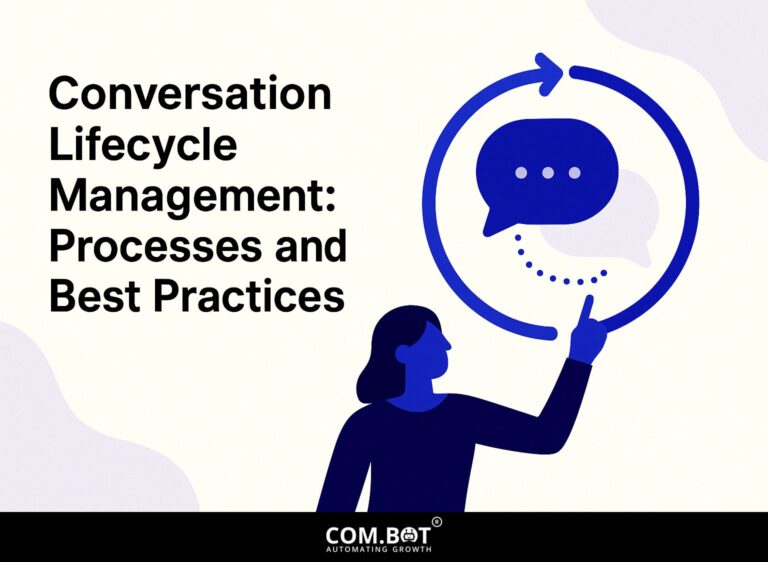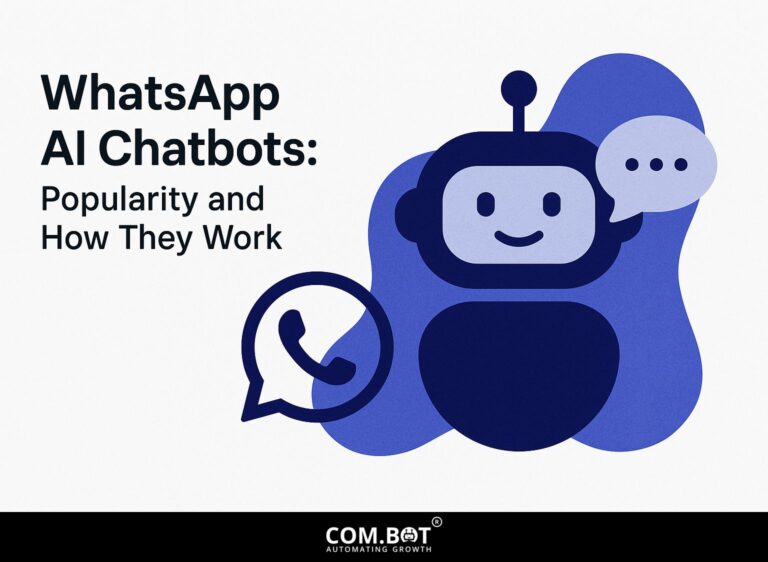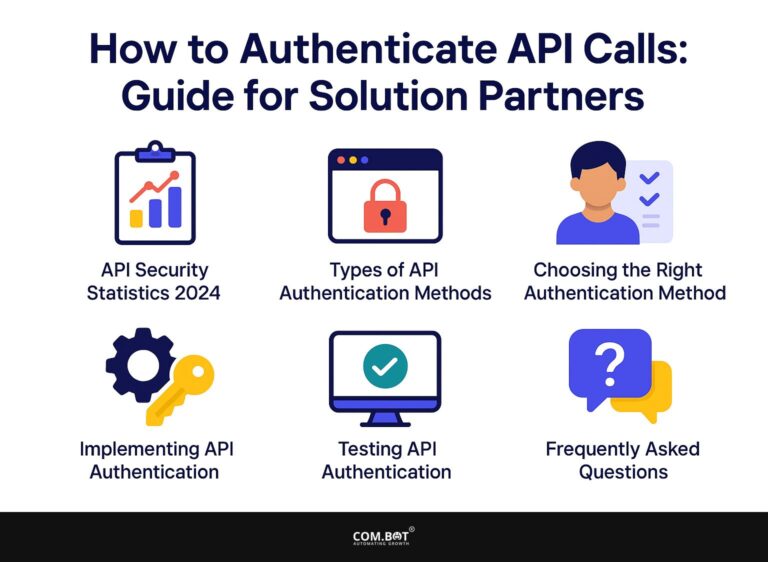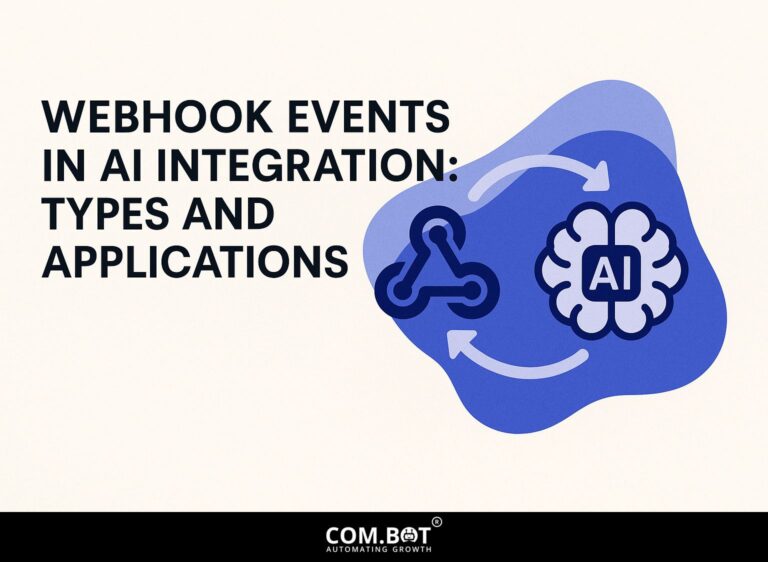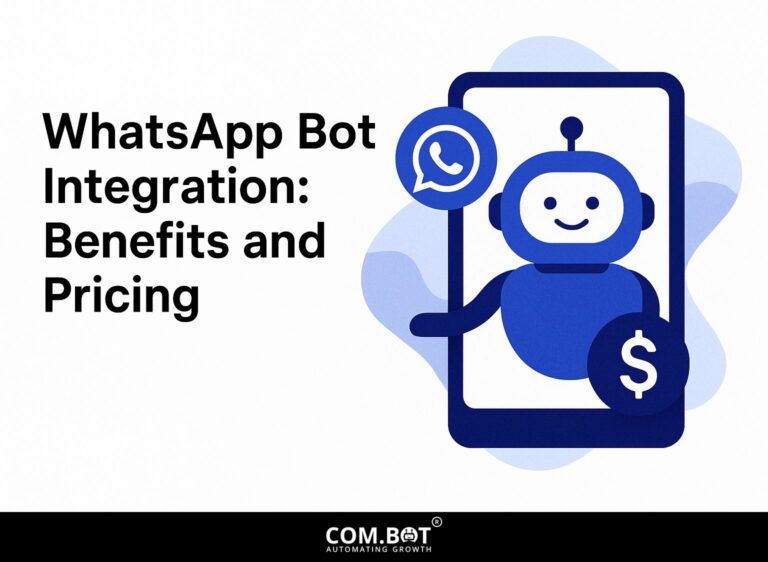Secured Chatbots: Features and Use Cases
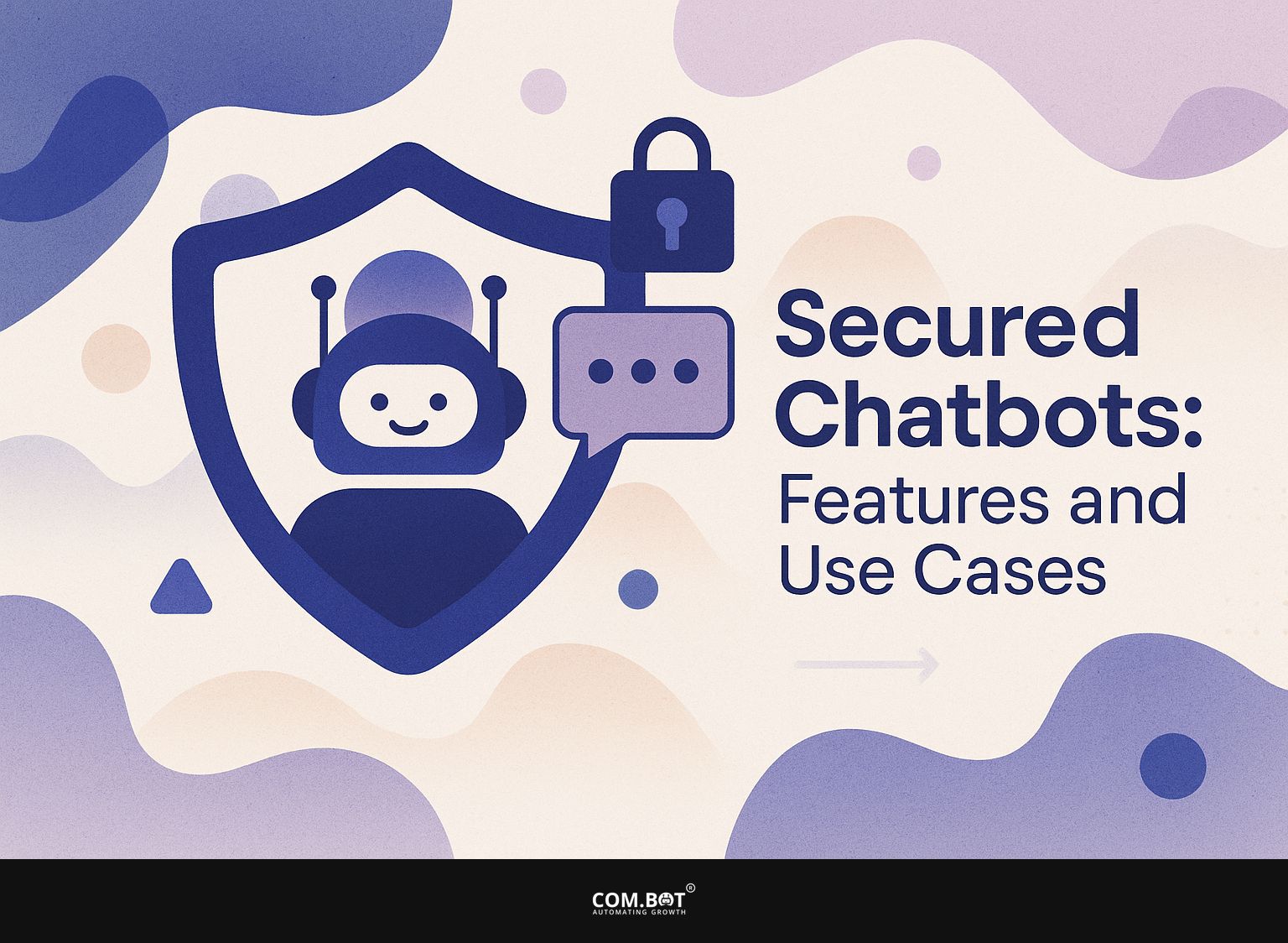
Secured chatbots are changing the way businesses interact online with potential customers. As artificial intelligence technology improves, businesses must pay attention to strong solutions for handling customer questions. This article looks at the key features and different applications of secured chatbots. It shows how they improve safety and customer satisfaction while dealing with current challenges.
Key Takeaways:
- Secured chatbots protect sensitive information and user privacy by using data encryption, verifying user identity, and following legal rules.
- Popular use cases for secured chatbots include healthcare, financial services, and customer support, as they handle sensitive data and require secure communication.
- Secured chatbots will improve with AI and machine learning developments, along with more attention to privacy and data protection.
- 1 Chatbot Security Statistics and Challenges
- 2 Chatbot Security Statistics and Challenges
- 3 Key Features of Secured Chatbots
- 4 Use Cases of Secured Chatbots
- 5 Implementation Strategies
- 6 Future Trends in Secured Chatbots
- 7 Frequently Asked Questions
- 7.1 1. What are the main features of secured chatbots?
- 7.2 2. How do chatbots ensure data security?
- 7.3 3. What is user authentication in chatbots?
- 7.4 4. What are some use cases for secured chatbots?
- 7.5 5. Why is it important for chatbots to have secure APIs?
- 7.6 6. How often should chatbots be updated for security purposes?
1. Definition and Importance
Secured chatbots refer to AI-driven systems designed to handle user interactions while safeguarding sensitive data through advanced security measures. These chatbots are important in customer service sectors since they improve satisfaction and help build trust.
Zendesk uses safe chatbots to provide customer support around the clock, ensuring questions get quick replies and protecting personal information.
Companies can improve customer service by using Natural Language Processing (NLP) to analyze past interactions and create responses that are more useful in the future. This proactive approach increases customer confidence and cuts down on response times, resulting in higher satisfaction rates and a strong competitive advantage.
Curious about how Com.bot enhances chatbot effectiveness through A/B testing? This method allows for continuous refinement and improvement, aligning responses with customer expectations.
2. Overview of Security Challenges
Even though secured chatbots have advantages, they still encounter many security issues that can put user trust and data safety at risk.
One significant challenge is data breaches, exemplified by the 2017 Equifax breach which exposed personal information of 147 million people. Unauthorized access can occur when chatbots do not verify user identities adequately, allowing malicious actors to manipulate conversations.
Related insight: Chatbot Influence on Public Opinion: Challenges highlights how misuse can extend beyond individual data breaches to influence broader public perceptions. Compliance issues also arise, especially with regulations like GDPR, which requires explicit consent for data usage.
Businesses can reduce these risks by using strong encryption, performing frequent security checks, and using advanced user authentication methods like two-factor authentication.
Chatbot Security Statistics and Challenges
Chatbot Security Statistics and Challenges
Chatbot Security Risks and Measures: Security Risks
Exploring the complexities of chatbot vulnerabilities, particularly prompt injection, reveals significant challenges. For those seeking an extensive analysis, our deep dive on chatbot influence covers how these AI tools can shape public opinion.
Chatbot Security Risks and Measures: Security Measures
Chatbot Security Risks and Measures: User Impact
The Chatbot Security Statistics and Challenges data highlights key vulnerabilities and measures associated with chatbot technology. As chatbots play a key role in customer service and communication with users, knowing these statistics is important for improving security and building user trust.
Chatbot Security Risks and Measures reveal significant concerns related to data protection and system vulnerabilities. Data leakage incidents affect 73% of chatbots, posing a major threat as sensitive user information can be exposed. Alongside, 65% of chatbots are susceptible to prompt injection attacks, where malicious inputs can manipulate chatbot responses, potentially compromising security and data integrity.
- Security Measures: The implementation of encryption technologies is prevalent, with 82% of chatbot systems adopting it to safeguard data transmissions. However, only 58% of chatbot systems undergo regular security audits, highlighting a gap in proactive vulnerability assessment and mitigation efforts.
- User Impact: 50% of AI chatbots face threats from phishing and scam attempts, showing the need for better tracking of how users interact and stronger security measures. Furthermore, only 37% of users are aware of chatbot security issues, emphasizing the necessity for increased education on safe usage practices and identifying potential risks.
In summary, the Chatbot Security Statistics and Challenges Stress the critical need for strong security systems to guard against data leaks and prompt injection attacks. Increasing user awareness and implementing regular security audits can significantly mitigate these risks, ensuring a safer and more secure chatbot experience for users. Addressing these challenges requires a collaborative effort between developers, security experts, and end-users.
Key Features of Secured Chatbots
A strong and safe chatbot needs to include important features to work well and keep user conversations secure.
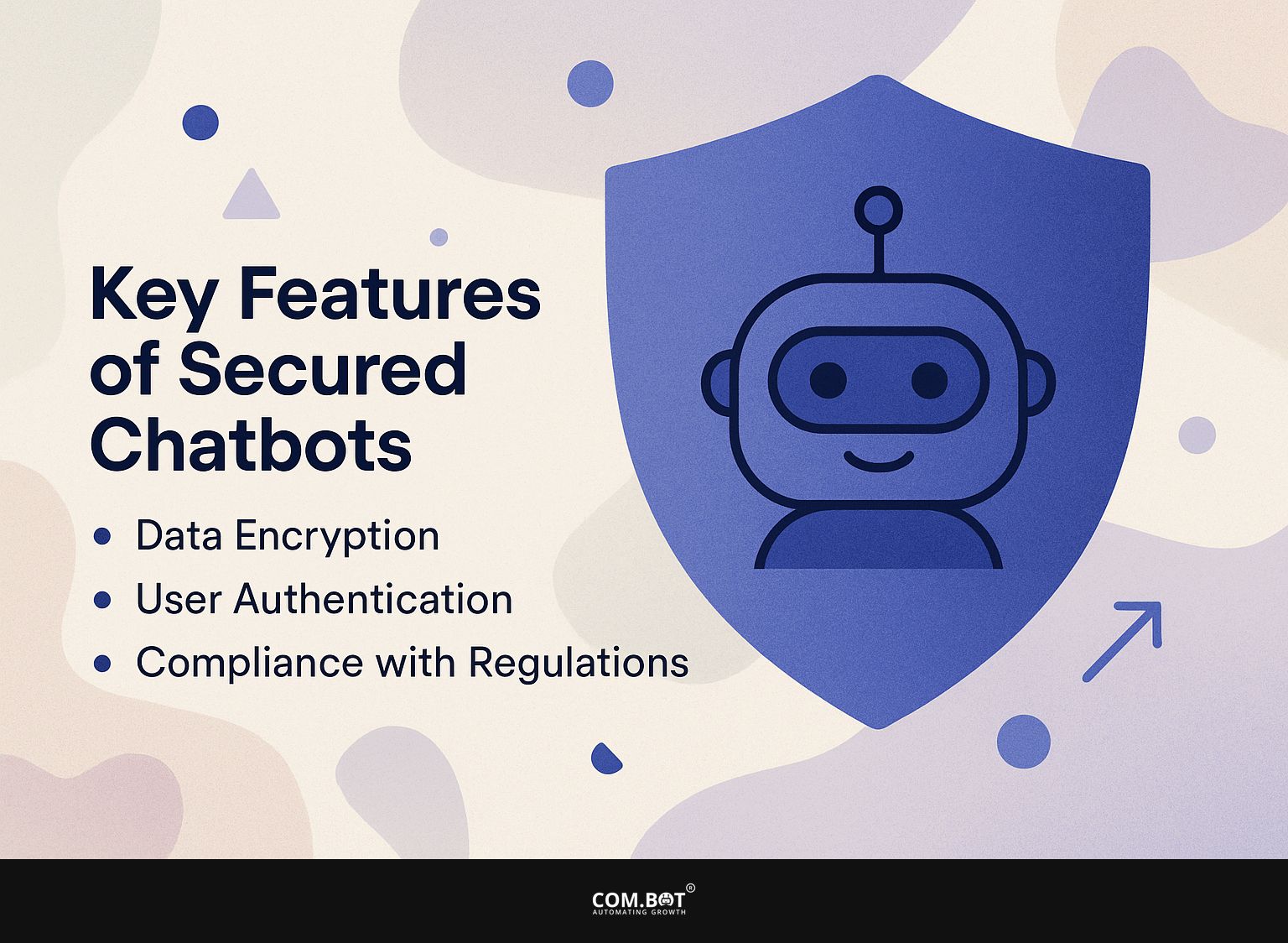
1. Data Encryption
Converting user data into unreadable formats is key for keeping chatbots secure and preventing unauthorized access.
Two widely used encryption methods are AES-256 and TLS protocols. AES-256 scrambles stored data, protecting it against unauthorized access. It’s often used in apps like WhatsApp to keep messages safe.
On the other hand, TLS encrypts data in transit, protecting user information during communication; this is essential for customer service chatbots like Drift, which safeguards conversations against interception.
Employing these techniques earns the confidence of users and complies with data protection laws, improving security.
2. User Authentication
User verification methods, like multi-factor authentication (MFA), greatly improve the safety of chatbot interactions. Implementing MFA requires users to provide two or more verification factors, such as a password and a temporary code sent to their mobile device.
For businesses, tools like Authy and Google Authenticator can facilitate this process. OAuth provides a secure way for users to grant access to their data without sharing passwords.
Companies like Slack use single sign-on (SSO) to make access easier. This allows users to sign in one time to access multiple services with good security. These practices help create a safer space for users to interact with chatbots.
3. Compliance with Regulations
Following rules like GDPR and HIPAA is important for businesses using secure chatbots to keep customer data safe. To follow these rules, companies need to use strict data management methods in their chatbots.
For instance, using encryption during data transmission protects sensitive information, while anonymizing user data limits exposure in case of breaches. Adding features like user consent requests makes sure we follow GDPR’s data protection rules.
In the healthcare sector, where HIPAA compliance is non-negotiable, chatbots should be designed to avoid storing health information unless absolutely necessary. Regular checks and revisions are needed to meet new rules and keep operations safe. One of our most insightful case studies demonstrates how to maintain GDPR and CCPA compliance effectively.
Use Cases of Secured Chatbots
Protected chatbots have important uses in different fields, solving specific issues and improving how customers interact.
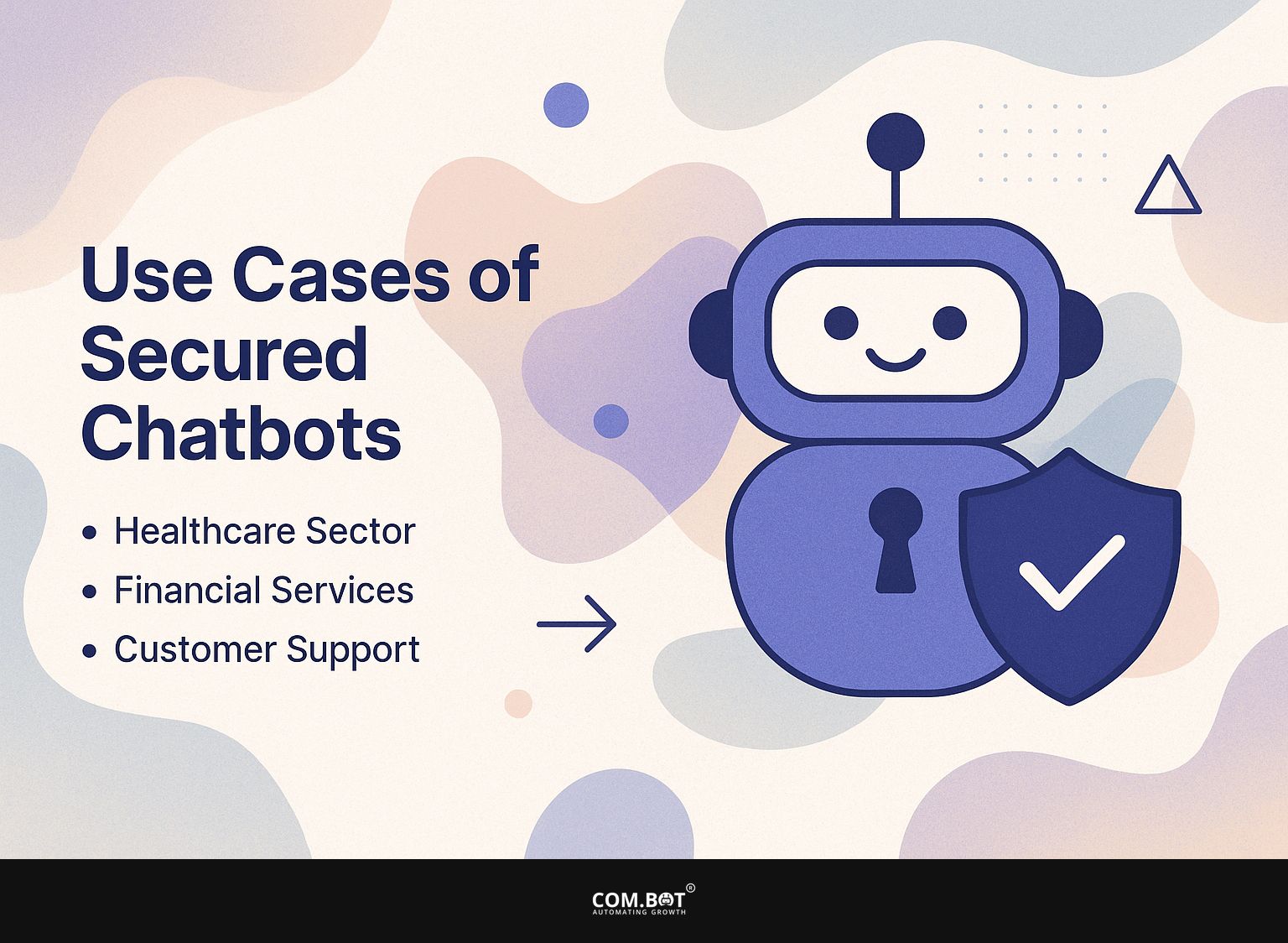
1. Healthcare Sector
In the healthcare sector, secured chatbots are revolutionizing patient interactions by managing sensitive information securely. These chatbots simplify tasks such as setting appointments and assessing symptoms, while following HIPAA rules.
Buoy Health uses a chatbot to check symptoms and recommend what to do next, helping to lessen the workload on healthcare workers.
Using technologies such as end-to-end encryption and two-factor authentication can protect patient data during interactions. Healthcare providers should also train staff on best practices for using these tools, ensuring a smooth integration into existing workflows while safeguarding sensitive information.
2. Financial Services
Financial services use secured chatbots to handle safe transactions and answer customer questions confidently. Kasisto, for instance, allows users to make transactions and check account balances seamlessly.
It uses complete encryption and multi-step verification to keep data secure, which is very important for modern finance. These chatbots maintain compliance with regulations like GDPR and PCI-DSS, which safeguards customer information.
For example, a user might simply text, “Check my balance,” and receive real-time updates without compromising their security. By using AI-based replies, banks and financial firms improve customer satisfaction while keeping strong security measures.
3. Customer Support
Secured chatbots are critical in customer support, providing instant responses while safeguarding user data in ticketing systems.
Platforms like Intercom use secure chatbots to make handling questions more efficient and improve user experiences. These chatbots use complete encryption to keep sensitive information private while they process user requests.
For instance, a chatbot can instantly answer frequently asked questions, allowing human agents to focus on more complex issues. These bots can automatically create support tickets when they detect unresolved queries, integrating seamlessly with systems like Zendesk. This method speeds up response times and follows data protection rules such as GDPR.
Implementation Strategies
Creating safe chatbots requires careful planning to pick the right technologies and make sure they fit with current systems.
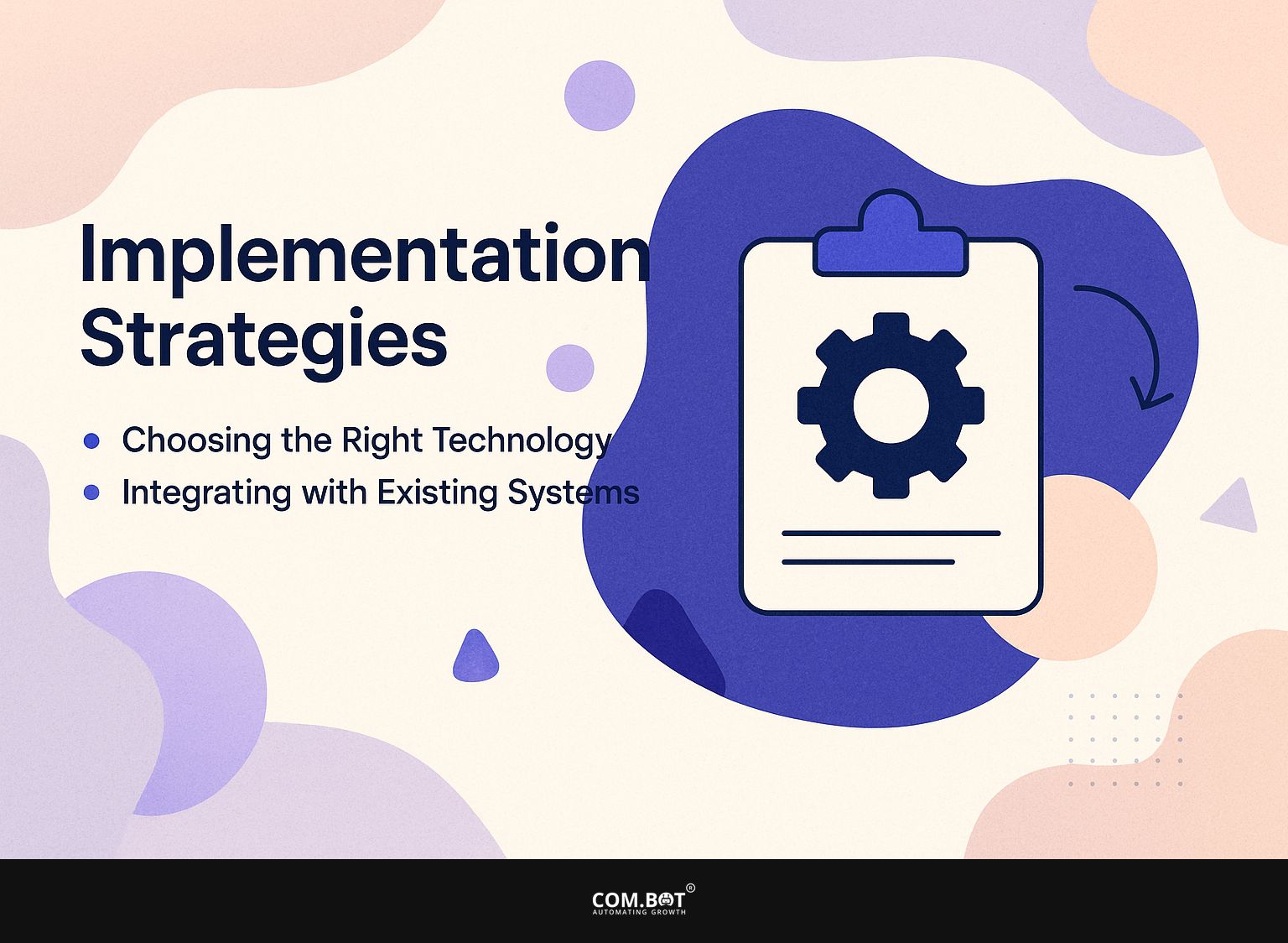
1. Choosing the Right Technology
Choosing the correct technology is important for setting up secure chatbots, impacting their ability to grow and maintain safety. When choosing a chatbot platform, consider scalability, integration capabilities, and security features.
For example, Dialogflow offers effective language processing and is compatible with various messaging apps, making it a good choice for businesses that are growing quickly.
IBM Watson offers advanced AI capabilities and reliable security measures, ideal for sectors that need strict data protection. Check these tools to see if they match what you need now and what you want to accomplish later for a successful start of your chatbot.
2. Integrating with Existing Systems
Successful integration of secured chatbots with existing systems hinges on effective API utilization and data management.
Begin by identifying your goals-whether it’s enhancing customer support, increasing lead generation, or improving user engagement.
For example, a retail company might link a chatbot with Salesforce to manage order inquiries, making sales and support processes work better.
Use platforms like Zapier to connect your chatbot (e.g., ManyChat) with Salesforce or Zendesk, ensuring seamless data flow. Use webhook features to start actions based on what users do, making the system respond better. Check and adjust your chatbot’s performance numbers often to improve how it works over time.
Future Trends in Secured Chatbots
The progress in AI and the increasing need for privacy and data protection will influence the next generation of secure chatbots.

1. AI and Machine Learning Enhancements
Using AI and machine learning in chatbots will improve how well they answer and make chatting with them better and more secure.
For example, companies are using Natural Language Processing (NLP) so chatbots can better grasp what is being said and the emotions behind it, leading to more personalized discussions.
Platforms like Google’s Dialogflow and Microsoft’s Bot Framework use advanced language models to provide answers that align more closely with what users want.
Companies such as Zendesk have reported a 30% increase in customer satisfaction by implementing these technologies, resulting in quicker query resolution. By regularly training and updating their models, organizations can keep their chatbots effective and in tune with changing user needs.
2. Growing Importance of Privacy
As data privacy becomes increasingly paramount, secured chatbots must evolve to meet new regulatory standards and user expectations. Businesses should make privacy a priority from the start to follow rules such as GDPR and CCPA.
For instance, integrating end-to-end encryption can protect user data throughout interactions. Providing clear consent options for data processing builds trust; tools like OneTrust can help manage these consent forms.
Regularly reviewing and updating security rules ensures compliance and safety. Teaching employees about data protection rules is important, building a privacy-focused atmosphere that appeals to both users and regulators.
Frequently Asked Questions
1. What are the main features of secured chatbots?
The main features of secured chatbots include data encryption, user authentication, secure APIs, and regular security updates to prevent data breaches and protect sensitive information.
2. How do chatbots ensure data security?
Chatbots use various security measures such as SSL encryption, token-based authentication, and firewalls to protect data and prevent unauthorized access.
3. What is user authentication in chatbots?
User authentication is the process of verifying the identity of a user before granting access to the chatbot. This can be done through methods such as login credentials, biometric authentication, or multi-factor authentication.
4. What are some use cases for secured chatbots?
Secured chatbots can be used in many fields, like healthcare, banking, e-commerce, and customer service, to safely manage sensitive data and offer quick and personalized services to users.
5. Why is it important for chatbots to have secure APIs?
Protected APIs make sure that the chatbot’s communication with outside systems is safe and verified. This stops harmful attacks or leaks of information.
6. How often should chatbots be updated for security purposes?
Chatbots need frequent updates to keep up with the latest security standards and defend against new threats. It is recommended to have updates at least once a month, but the frequency may vary depending on the chatbot’s usage and sensitivity of data.
